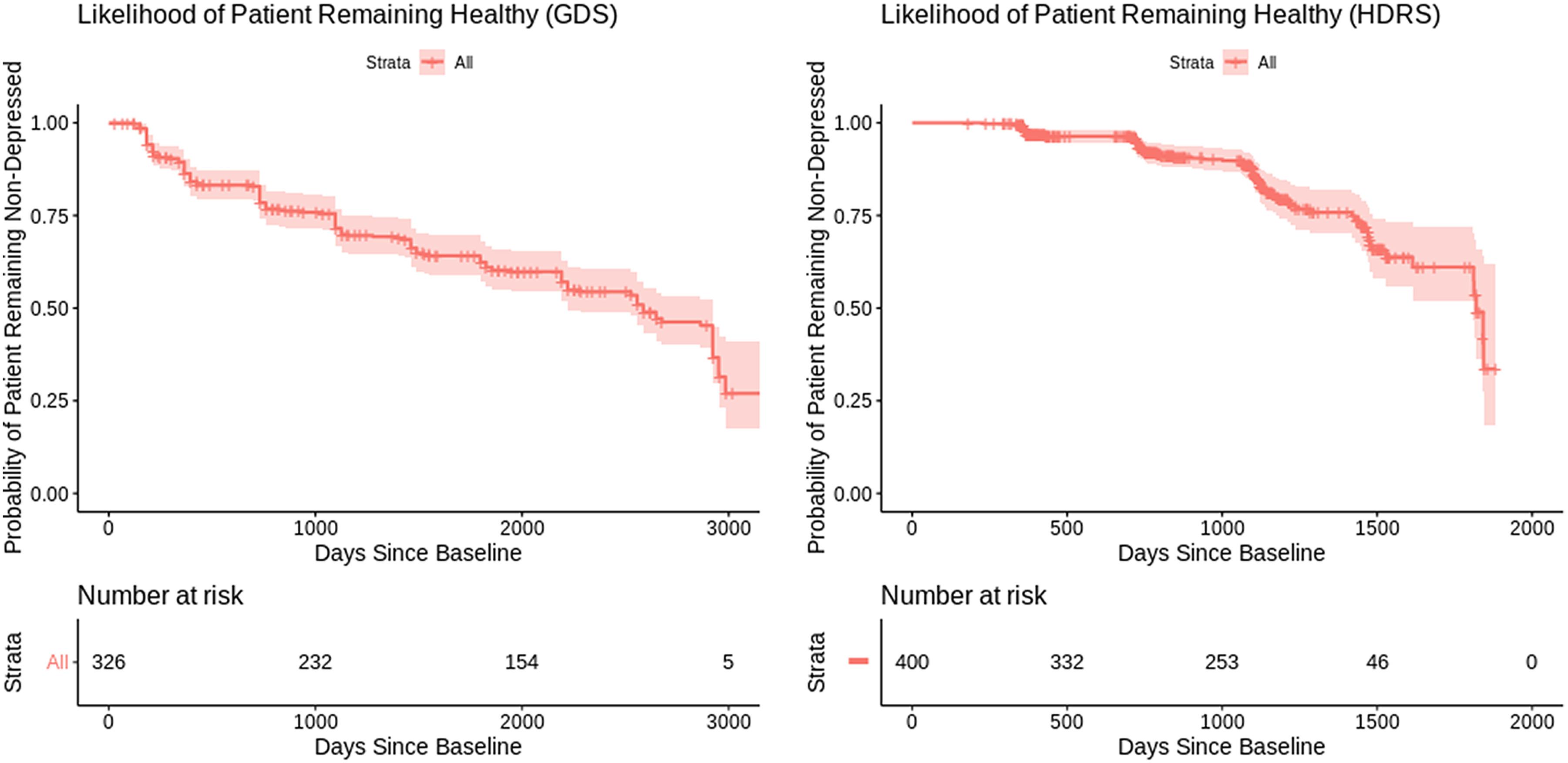
Background
Despite the established importance of identifying depression in Parkinson's disease, our understanding of the factors which place the Parkinson's disease patient at future risk of depression is limited.
Methods
Our sample consisted of 874 patients from two longitudinal cohorts, PPMI and PDBP, with median follow-up durations of 7 and 3 years respectively. Risk factors for depressive symptoms at baseline were determined using logistic regression. A Cox regression model was then used to identify baseline factors that predisposed the non-depressed patient to develop depressive symptoms that were sustained for at least one year, while adjusting for antidepressant use and cognitive impairment. Common predictors between the two cohorts were identified with a random-effects meta-analysis.
Results
We found in our analyses that the majority of baseline non-depressed patients would develop sustained depressive symptoms at least once during the course of the study. Probable REM sleep behavior disorder (pRBD), age, duration of diagnosis, impairment in daily activities, mild constipation, and antidepressant use were among the baseline risk factors for depression in either cohort. Our Cox regression model indicated that pRBD, impairment in daily activities, hyposmia, and mild constipation could serve as longitudinal predictors of sustained depressive symptoms.
Conclusions
We identified several potential risk factors to aid physicians in the early detection of depression in Parkinson's disease patients. Our findings also underline the importance of adjusting for multiple covariates when analyzing risk factors for depression.
Source: https://www.sciencedirect.com/science/article/pii/S0022510X21003099